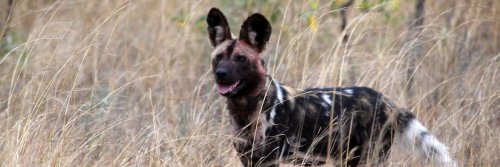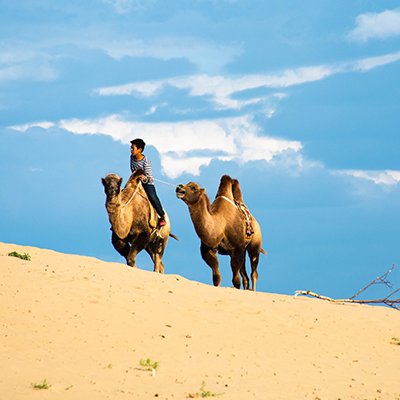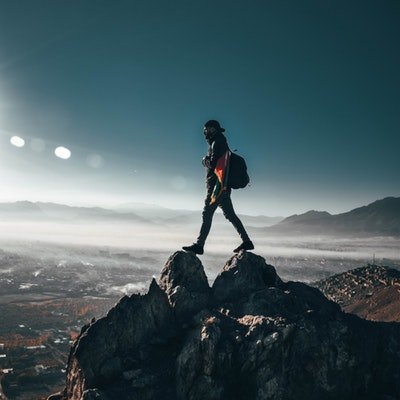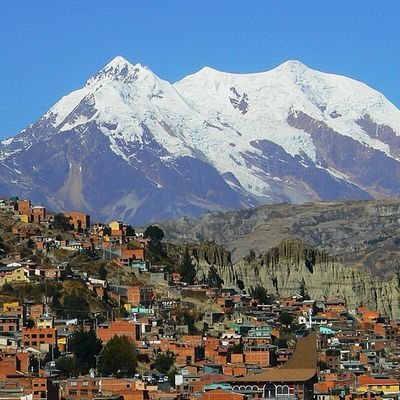We all dream of going on an African safari—the tempting image of glamorous safari tents, the never-ending wild landscape, the thrill of seeing the natural world at its most basic survival of the fittest. Seeing the 'big five'—leopard, elephant, lion, rhinoceros, and African buffalo—has long been the goal of many embarking on an African adventure. Then, there is the 'little five'—Ant Lion, Rhinoceros Beetle, Leopard Tortoise, Elephant Shrew, and Buffalo Weaver—that many tourists overlook until pointed out by a safari guide. With approximately one-quarter of the earth's biodiversity, Africa's list of endangered animals is growing exponentially—black rhinos, African wild donkeys, gorillas, and African forest elephants—to name a few creatures with numbers decreasing rapidly.
Add to this list the African wild dog often referred to as 'painted dog' or 'Cape hunting dog,' but scientifically called 'Lycaon pictus' meaning 'painted wolf'—not your cuddly, wet-nosed domestic dog that sleeps at your feet. The African wild dog is a social creature, a pack hunter, and an opportunistic predator that can run more than 35 miles per hour. Totally unique in its appearance, the dog's motley coat of individual patches of brown, black, red, white and yellow could have been the whimsical brush strokes of Vincent van Gogh, an expressionist artist. The wild dog has a distinct physical difference from domesticated dogs in that they only have four toes on each foot—domestic dogs have five on their forefeet. Wild dogs use their bushy white-tipped tails to communicate with each other when hunting, predominantly in the early mornings or late evenings when they blend perfectly in with the surrounding scrub. Typical of dogs everywhere, when they wag their tail, the hunt is going well, but if the prey is escaping, then it's droopy tails all around. With ears that act like satellite dishes swiveling to pick up tiny sounds far away, these quirky animals could be a child's imaginative drawing of a corny cartoon dog with radar bat ears.
Wild dog packs usually consist of seven to fifteen family members; occasionally, the number can go up to forty, dominated by a breeding pair that stays monogamous for their lifespan. The pack has a social hierarchy from the top dogs down to the pups that are cared for by the whole pack—somewhat like a puppy creche. Litters are large, sometimes up to 20 pups born at one time, but few survive due to disease, exposure, or maybe the den gets flooded. They even take care of their members when one is hurt or sick. Within the pack squabbles are rare, and extroverted greetings consist of a lot of whining, twittering in excitement, and the odd foot shuffle, while a short bark is a cry of alarm. Hunting packs have anywhere between six to twenty dogs in them. Their long legs and odd looks create a formidable force when bringing down an antelope or wildebeest. Failing the appearance of large prey, they will sharpen their teeth and quench their hunger on smaller animals such as birds or rodents.
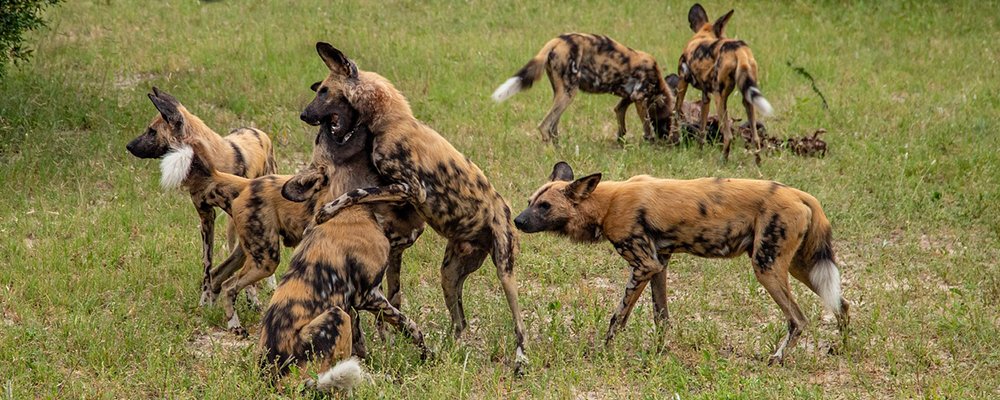
African wild dogs have had their numbers reduced dramatically over time due to the lack of roaming space, susceptibility to diseases, and being hunted by farmers who fear attacks on their cattle. Today, coming across a painted dog on a safari is a reason to celebrate. From May to September in South Africa (a short time later in East Africa), it's 'denning' season, and the dogs linger longer in one area, making it easier to determine where the dogs are located in a national park—but, there will never be any guarantee of a sighting. The areas where you have a good chance of seeing these beautiful dogs are listed below:
Kenya
Get ready for the experience of a lifetime and bragging rights, as wild dogs are regularly seen due to the fact that it’s an established denning area. Do remember that the dogs are wild creatures with their own timetables, and there are no guarantees. But it's here that you will be able to see black rhinos as well.
Tanzania
Ruaha and Nyerere (Selous) National Parks
Regular sightings have been reported, so take your binoculars and be ready to get a thrill. Expect a lot of boating activities when staying in Nyerere National Park.
South Africa
Madikwe Game Reserve will give you the ‘big five' to gawk at, plus a thriving wild dog population after it was reintroduced in 1994. A fenced reserve translates to the dogs being captive in the park. A small population of wild dogs can be found in the Hluhluwe-iMfolozi Game Reserve. At the famous Kruger National Park (including Sabi Sand Game Reserve and Timbavati Nature Reserve), you may struggle to see a wild dog, but they are there.
Northern Botswana
Okavango Delta, Savuti and Linyanti, Kwando and Selinda Concessions
A vast region in Northern Botswana, it's home to a large wild dog population, especially the Chitabe and Qorokwe areas with many reported sightings. The Savute Marsh, Selinda Spillway, Linyanti, and Kwando Rivers create an ecosystem where massive herds of zebra, elephant, buffalo, and numerous other species roam freely.
Zambia
Luangwa Valley and Liuwa Plain National Park
With regular sightings in South Luangwa, North Luangwa is in recovery mode, as dogs were decimated by disease. Meanwhile, in the west of Zambia, at Liuwa Plain National Park, painted dogs were reintroduced in 2021.
Zimbabwe
The largest national park in Zimbabwe, wild dog sightings often occur here. It's also home to the Painted Dog Conservation Project, aiming to rehabilitate and protect wild dogs.
Zimbabwe and Zambia
Mana Pools National Park, Zimbabwe and Lower Zambezi National Park, Zambia
Mana Pools is a magnet for incredible wildlife, including painted dogs that den around the area on one side of the Zambezi River. On the other side of the river, Lower Zambezi National Park has recently seen the return of numerous large packs of wild dogs.
Gail Palethorpe, a self proclaimed Australian gypsy, is a freelance writer, photographer and eternal traveller. Check out her website Gail Palethorpe Photography and her Shutterstock profile.

